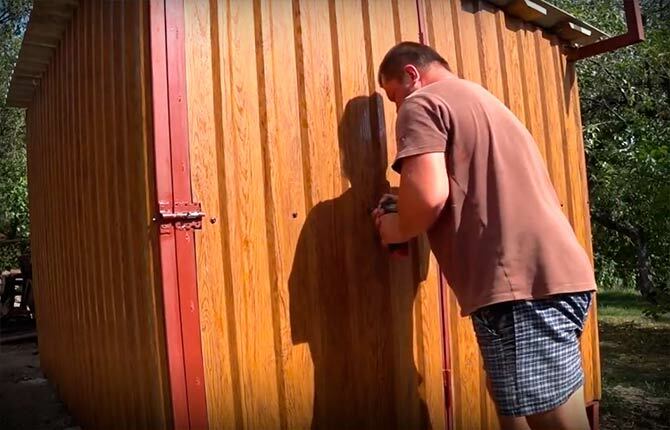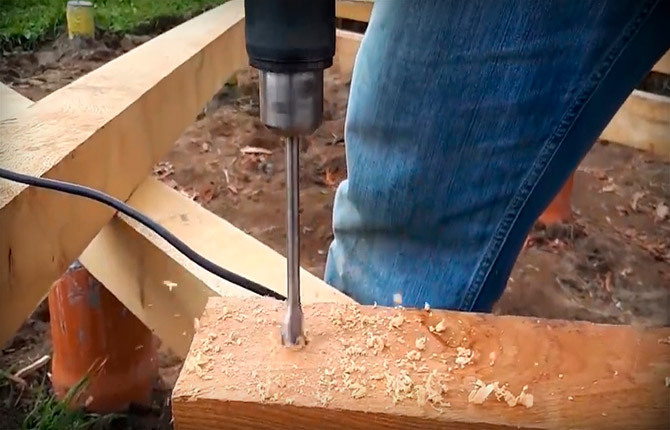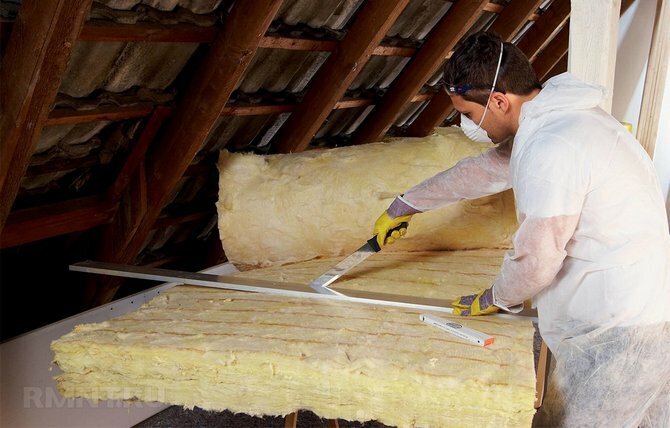Finishing walls with silk plaster is one way to make them even and smooth. This material is sometimes applied as a final coating. It will shimmer in the sun's rays. Because of this, silk decorative plaster on the walls looks like the fabric of the same name. You can add abrasives to the mixture to make the coating textured, to give it a different texture.
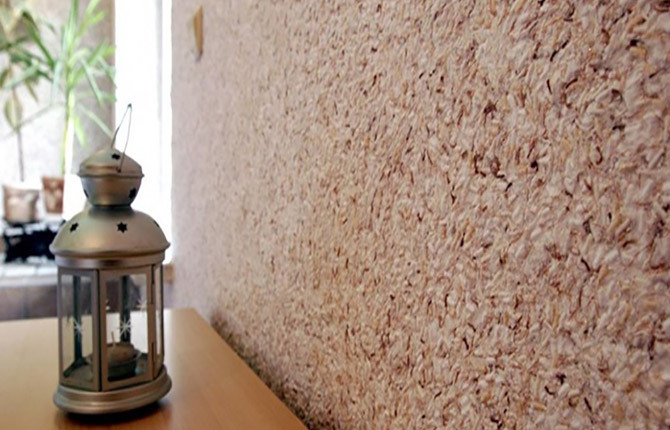
The content of the article:
-
What is silk plaster
- pros
- Minuses
- Types of finishing mastic
-
How to apply decorative plaster “wet silk” with your own hands
- 1. Surface preparation
- 2. Application of finishing material
-
How to lay plastic silk plaster with your own hands
- 1. Preparing the base
- 2. Preparing the mixture
- 3. Laying the liquid mass
- How to make a drawing
What is silk plaster
Silk decorative plaster is a building material that is used to cover walls. Many people apply it as a final finishing step. It is not covered with other materials, because it has a glossy iridescent color. In the sun's rays, silk plaster for walls changes shades and creates texture.
Contains environmentally friendly, clean ingredients. These include cellulose, cotton, and silk. The latter can be artificial or natural. Because of this additive, the plaster was called silk. Any interior can sparkle with it in a new way. Plaster has properties such as plasticity and flexibility. It is easy to work with and finish walls of any size.
The material has such properties due to its composition, which includes acrylic, silk elements, and plasticizers. Silk can be added in different proportions; the color intensity during finishing will depend on this.
pros
This material has advantages for interior wall decoration, so silk composition is often chosen by buyers for decoration.
Advantages of the building material:
- Silk texture. Due to the silk particles contained in the plaster, the coating will shimmer in different colors in the sunlight after finishing.
- Eco-friendly, clean composition. The material includes cellulose and silk, which do not cause allergic reactions or irritation. Therefore, plaster can be used to decorate interior walls in a child’s room or in a room for allergy sufferers.
- The surfaces harden after coating. The silk effect is also achieved due to the use of plasticizers in the composition.
- Resistant to dust and dirt. Thanks to this, the walls always remain clean, they are not picky about the conditions of care after finishing.
- There is no odor during the application of plaster. You can cover walls without additional respiratory protection.
- No fires. Fire does not spread through silk plaster.
- Permeability. The wall can “breathe” after finishing.
- Resistance to mechanical damage and external factors. The plaster does not crack when the house shrinks. It retains a silky shine despite its service life. The brightness and color remain in their original form, so the walls do not require finishing in the next few years.
- Increased heat and sound insulation. Thanks to the density and structure of the plaster, heat will be retained in the room, and sound will not spread beyond its boundaries after finishing.
- The silk surface is seamless. With the help of such a coating you can hide the imperfections of the walls, even make them visually smoother.
- The opportunity to experiment with design and wall decoration style. The application technology can be any, which determines the final finishing result.
- Possibility of applying plaster yourself without the help of a specialist. Thanks to a simple finishing technique, you can distribute the material on the walls yourself. The result will still please the home owner.
- Silk plaster can be used to create different textures on walls. For example, wet effect, velvet, relief, etc.
Thanks to such a large list of advantages, building materials are often chosen instead of silk wallpaper. It is bought for interior decoration both in apartments and in private houses.
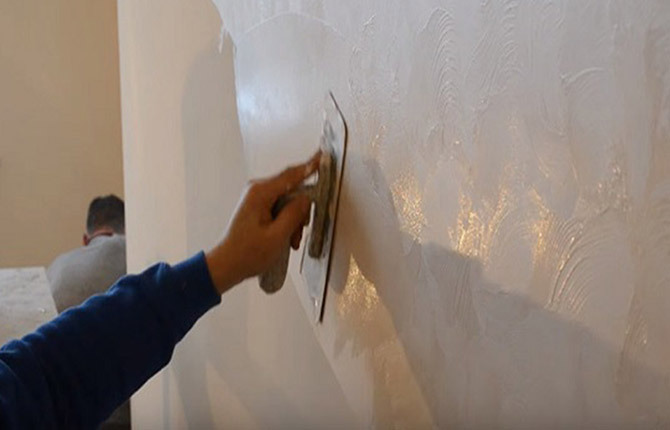
Minuses
Although there are fewer disadvantages in this finish than advantages, they still exist. They should be studied before purchasing a material to ensure that it is suitable for finishing work in certain conditions.
Cons 3:
- Cost of work. Even if the silk plaster itself can be found inexpensively, the cost of the work and services of the craftsman will be high. They can finish small sections of walls on their own, but people without experience are better off turning to experienced workers.
- Silk material is permeable, so it will absorb different odors. Because of this, plaster is not recommended for use in the kitchen. But, if you want to make a design using silk building material in a room where different odors spread, you can use a colorless varnish on top. It will cover the silk plaster and protect it from absorbing moisture and aromas after finishing.
- Fast drying. It is worth applying the silk composition once, because when it dries and re-coating, streaks may occur. Therefore, to finish large areas, it is recommended to hire several craftsmen.
The advantages outweigh all the disadvantages. So you can purchase building materials for finishing an apartment or house if you want to make a durable silk coating.
Article for you:Plaster for foam concrete internal and external
Types of finishing mastic
Before purchasing silk mastic, you need to consider the characteristics of the material. There are several types of such plaster, which determine the application technology and operating conditions:
- wet silk - applied with a spatula, no more than 2 mm;
- liquid - applied in 2-3 layers, drying for at least 6 hours;
- plastic - knead by hand, swell for a long time, apply with a hard spatula.
If it is difficult to apply on your own, resort to the help of a specialist. It is necessary to take into account the condition of the walls before finishing. If they were leveled before applying the plaster, you can use an expensive, professional silk mixture. It will lay down easily, leaving no streaks or cracks after drying.
Irregularities on the walls, on the contrary, can be hidden behind inexpensive building materials. It will correct imperfections in the coating and make it more accurate. Such silk mixtures can be applied independently, which will also save on finishing work.
Expensive mastic models are resistant to damage and abrasion. They retain their original appearance and texture for a long time, so they do not need to be restored. However, if the walls are damaged by mechanical means, it will not be possible to cover the irregularities with old silk material. Although the mastic remains bright, it darkens a little over time. Therefore, partial restoration may lead to stains on the walls.
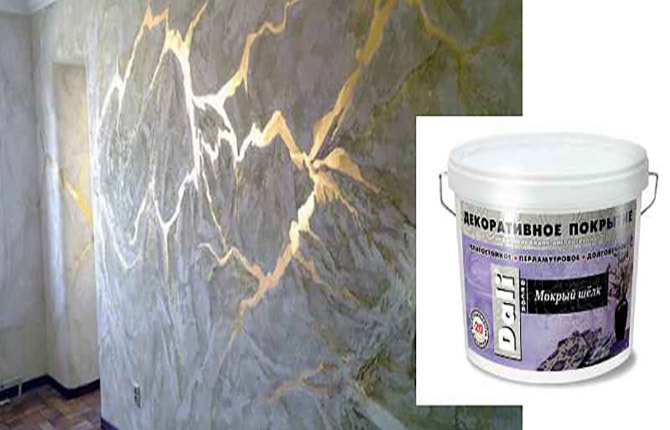
How to apply decorative plaster “wet silk” with your own hands
If you decide to apply plaster yourself, you must follow the rules and recommendations from professionals. What you will need:
- water;
- mixer;
- putty knife;
- color (optional).
For example, wet silk is bred from a dry silk mixture. To cover walls with this material you need:
- Dilute the powder.
- Using a mixer, everything needs to be brought to a paste-like state.
- To give the plaster the required color, construction dyes are used - tinting. The concentration and ratio of ingredients can be found on the packaging.
- After adding the color, you need to mix everything again.
- When the silk consistency becomes homogeneous, the solution should be left for half an hour to an hour. It needs to sit to make it easier to apply to the walls.
- Next you need to prepare a spatula. Narrow ones will be easier to work with when finishing.
The first layer of plaster should be no more than 2 mm, otherwise it may not dry completely.
1. Surface preparation
Before applying plaster, you need to prepare the walls. Finishing work depends on the surface. For example, concrete will absorb various mixtures and substances. Therefore, it is covered with putty. This also allows you to level the walls and make the color of the future silk mastic brighter. After applying the putty, you can paint the walls with color.
Before covering with silk mastic, it is worth checking the surface for peeling and cracks. If they are, you need to use a primer. This will level the surface and prepare it for finishing with mastic.
Plasterboard walls must be completely covered with putty. To avoid unevenness, the joints must be painted with a solution consisting of 3 parts paint and 1 PVA glue.
Walls made of chipboard, MDF or plywood should be coated with a primer. It will strengthen them before further finishing with silk mastic, and sections of pipes or metal structures need to be coated with oil paint or special enamel.
After proper preparation of the walls, you can get a neat coating with mastic. Thanks to the plasticity and flexibility of the material, you can experiment with it and try different designs. Although silk building material is more expensive than wallpaper, it can be used for any room. And since you can also choose the color of the material yourself, it is easy to choose mastic for each interior.
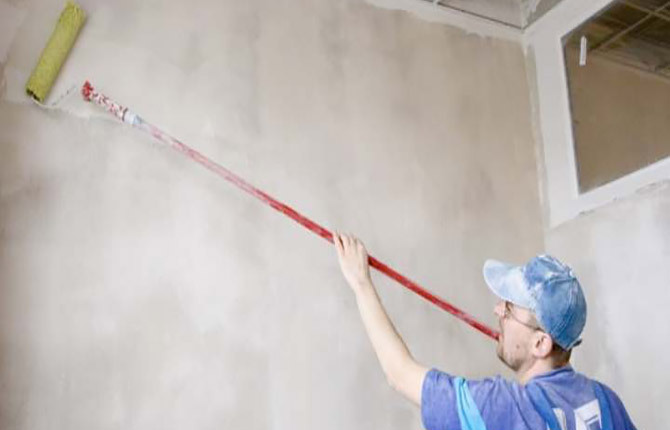
2. Application of finishing material
Application takes a little time and effort, because it does not require precision and you only need a spatula:
- the plaster is distributed in chaotic strokes.
- The spatula is carried along the wall with slight pressure.
- repeat the treatment until the required depth of grooves and pattern is obtained.
Several layers are applied when it is necessary to achieve three-dimensionality of the pattern. After finishing, it is possible to achieve the desired “wet silk” effect.
Application in one layer
The “wet silk” technology involves finishing in several layers. But some people only do one. It depends on preferences, design ideas. Silk material should be applied in chaotic strokes, no more than 2 mm thick. Next, the layer must dry for 6 hours. To maintain the wet effect, the layers must be thin. The main thing is to let them dry, otherwise the walls will turn out sloppy and uneven.
Technology of applying “wet silk” plaster in two layers
The plaster turns out bright only after 3 layers, but many stop at two. First, the first layer of mastic with a thickness of no more than 2 mm is applied to the prepared surface using chaotic strokes. Next it should dry.
This takes 6-8 hours. It is better to leave it overnight and start applying the second layer in the morning. It is applied in a similar way. Drying time will be the same. After the final layer, you can seal everything with varnish. This, after finishing, will increase the service life of the plaster.
How to lay plastic silk plaster with your own hands
Not everyone knows how to apply silk plaster, but it is not as difficult as it seems. The material is flexible and ductile, so it can be used even without prior experience. But it is recommended to give expensive mastic to the hands of masters, since it has its own characteristics in application and technique. You can apply inexpensive building material yourself. There is a selection of video tutorials and instructions that allow you to do this quickly and accurately.
The main thing is to follow the rules and recommendations of professionals to avoid damage, cracks, and chips of the material.
1. Preparing the base
Before applying plastic mastic, you also need to prepare the base. To do this, it is necessary to hide the defects using putty or primer, depending on the material from which the walls are made. It is also worth checking the surface for grease stains and dirt. They need to be removed so that the mastic lies evenly and neatly. To do this, you can use various solvents and chemicals.
If there are metal structures that will also be covered or decorated, they need to be painted. For this purpose, there is metal paint, which allows you to cover even products with defects. Thanks to painting, rust and corrosion will not appear on such structures.
To ensure that the products do not stand out from the interior, the paint color should be the same as that of the mastic. Metal structures should first be cleaned of mold and plaque so that they do not affect the painting result. To do this, you need to coat the products with an antiseptic and treat them with anti-fungal drugs. After drying, they can be coated with paint.
The wall must be cleaned of dust and other contaminants, primed, and allowed to dry. Only after the finishing material has completely dried can you begin to apply the mastic solution. This must be done carefully, but quickly, so as not to create a multi-layer effect at the first stage of finishing.
2. Preparing the mixture
After preparing the walls, you can start mortaring. To do this, you should find an empty, clean container, and also heat the water to room temperature. T. Because mixtures may differ in composition and preparation technology, you need to read the instructions on the package. It will indicate step by step how and what to mix. The main thing is to maintain the proportions, otherwise the solution may turn out to be liquid or thick, with lumps. You can breed this way:
- Heat the water to 30-40˚C. If the temperature is lower, the dry mixture may not dissolve, which will lead to the formation of lumps.
- Next, in a ratio of 1:10, you need to pour water into a container prepared in advance.
- Now you need to gradually add the dry ingredients. If the mixture contains shimmer or other particles to add texture, they should be added first. Before pouring the plaster itself, it is necessary to allow the remaining components to swell. This will take about 15-20 minutes.
- It is recommended to mix plastic mastic by hand. The mixer can ruin the texture, which will affect the result of the coating.
- Stir the mixture until a homogeneous consistency is obtained. It should feel like thick sour cream. When the consistency is homogeneous, the solution should be left for another half hour to an hour to swell.
When the required time has passed, the mass can be used. If a little paste remains during dilution of the mixture, it can be saved for the next finishing. To do this, place it in a sealed plastic bag and close it tightly. It will need to be moistened again before use.
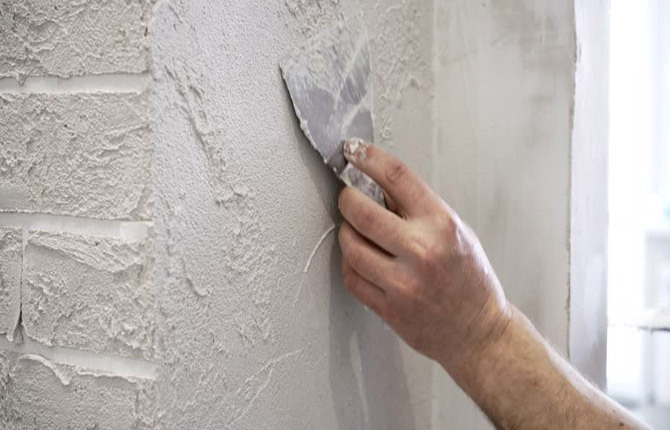
3. Laying the liquid mass
To apply the liquid mass to the wall, you will need construction tools. You need a trowel or spatula, but you can also use a plastic grater. If you use a putty knife, then they need to take a little material and then put it against the wall. An angle of 10˚ should form between the tool and the wall.
After this, it needs to be pulled forward so that the composition is evenly distributed along the direction of movement of the hand. Thus, it is worth covering the entire area with a layer no more than 2 mm thick. After this, the material should be left to dry for an hour, and then you can level it again so that protrusions do not form.
You can smooth the surface using a grater. It needs to be moistened with warm water, and then walked over the entire wall. This will remove the protruding material and make the surface smoother.
Using a lamp you can see all the irregularities. Therefore, it should be periodically connected and illuminated from different sides. It is necessary to apply plaster in 1-3 layers. At least 6 hours must pass between each finish so that the material can dry. This occurs at a temperature of 15-20 ˚С. After finishing, you can ventilate the room, but at the same time monitor the thermometer readings.
Sudden temperature changes lead to damage and slow down the drying process.
How to make a drawing
Many people use silk mastic to bring their design ideas to life. With it you can create any pattern or texture, and anyone can do it even without experience working with the material. To do this, you need to prepare compositions with the addition of different dyes. They are prepared in the same way, but different construction colors are added to them. Before finishing, you should prepare the walls and outline a drawing:
- The preparation of the walls will be the same as before applying mastic using standard techniques. They need to be puttyed or primed, depending on the degree of unevenness and defects. Next is to outline the drawing. This should be done on a dry surface so as not to damage it.
- You can use a pencil to draw or trace the outline. Its color will be covered by the paste, so the outline will not be visible.
- After the drawing is outlined, the voids are filled with paste. Then they are leveled, and the outline is outlined with the sharp end of a spatula. This allows you to make a clear border so that the colors of the picture do not mix with each other.

It is recommended to fill the voids one by one in order to have time to level and correct them. This method of creating a pattern is suitable for simple patterns. If it has a lot of details, you can use another painting method. It will require white plaster to cover the wall and acrylic paints. They can draw any pattern and then cover it with varnish. This will increase its service life.
How would you apply silk plaster when carrying out renovations? Share the link on social networks and bookmark the article.
